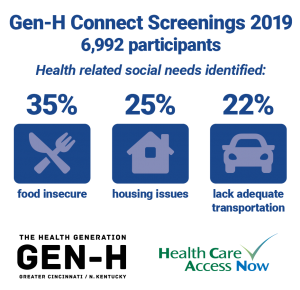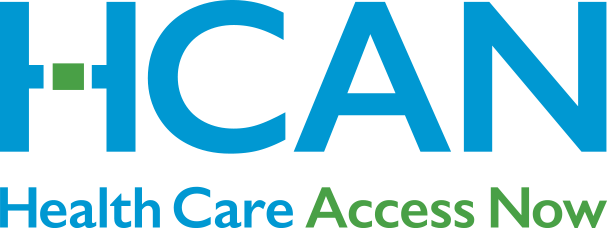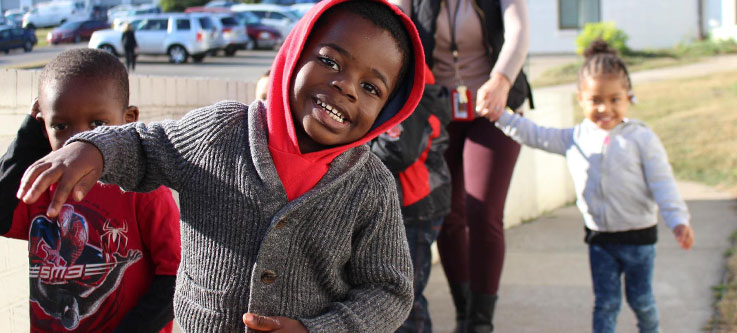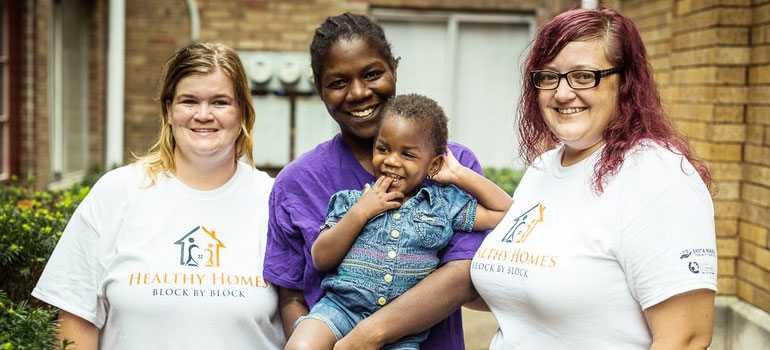Kiana Trabue: Data-driven collaborative health improvement


Kiana Trabue is the Executive Director of Population Health Strategies at The Health Collaborative, which is a regional health improvement non-profit organization. “Our mission is to lead data-driven improvement that results in healthier people, better care, and lower costs. Our vision is for Greater Cincinnati to be healthy by design, and for everyone to be connected to quality, affordable healthcare.”
That may seem like a challenging mission to achieve. But Trabue is leading an initiative called Gen-H (Generation Health) Connect* designed to do just that—and it’s working.
Gen-H Connect works with clinical delivery sites to screen Medicare and Medicaid beneficiaries and determine if they have needs in core areas: “food insecurity, housing, utilities, transportation, and safety.” Those that are in need are provided with a resource summary that can help them strengthen their position. Beneficiaries that meet certain criteria are also referred to community navigation services.
Trabue says this project creates “building blocks around collaboration” because “none of us can solve these problems alone.” The data that comes from the program is used to improve health and increase health equity. “Everyone should have the same opportunity to achieve health,” she says.

Health is not health care
Gen-H Connect is predicated on the idea that “health is not health care.” Trabue continues, “Your health is not only determined by what happens in a health care setting, but by social and economic factors.” It is her hope that focusing on the community and its role in improving health will form stronger connections between health care providers, social services providers, and those they’re meant to serve.
“Having shared metrics and goals across those organizations creates an ability to solve for a historical disconnect between clinical care and social services,” Trabue says. “Coming together with some shared language, common goals, metrics, and measurements allows the two groups to convene.”
Changing healthcare’s delivery
Gen-H Connect is one example of the ways in which The Health Collaborative tries innovative ways to partner with organizations and find innovative ways to deliver care. “Things are happening all the time with healthcare on a federal level,” Trabue says. “But this way, we don’t have to wait on Washington. We can make changes, right now, locally.”
Health Care Access Now serves as a community service navigator organization in Gen-H Connect, as well as working with The Health Collaborative in other ways. “With Gen-H Connect, HCAN uses Community Health Workers to walk hand-in-hand with clients with social and economic needs, helping them get the resources to address those needs,” Trabue explains. She refers to HCAN as a “leader in that model” because they have “internal processes that make it easy to work with CHWs.” The Health Collaborative has even used HCAN’s processes as best practices to help improve other organizations that deliver similar services.
“Community Health Workers are essential to improving the health of our community—and they’re widely underutilized,” Trabue says. Because they’re trusted members of the community and have knowledge of available resources and barriers, they “could change the entire healthcare system in our region, especially if they’re used more in a clinical setting.”
Until “social needs that can negatively impact health outcomes” can be adequately addressed, the same problems will continue to occur, Trabue says. And utilizing CHWs can put an end to that cycle by short-circuiting patterns and connecting those in need with resources that can make a big difference to all aspects of their lives.
*The project described above was supported by Funding Opportunity Number CMS 1P1CMS331598-01-00 from the U.S. Department of Health & Human Services, Centers for Medicare & Medicaid Services.





